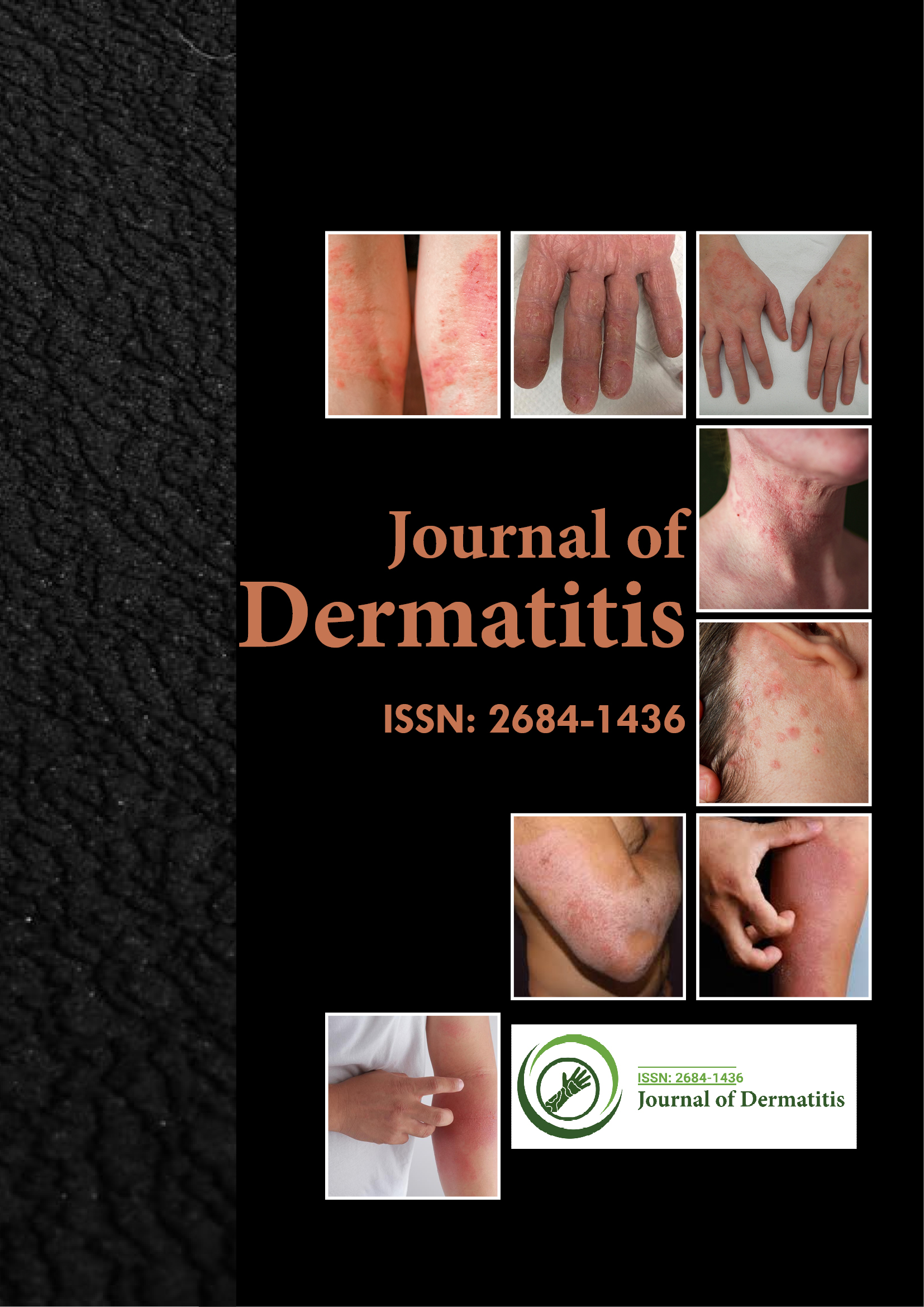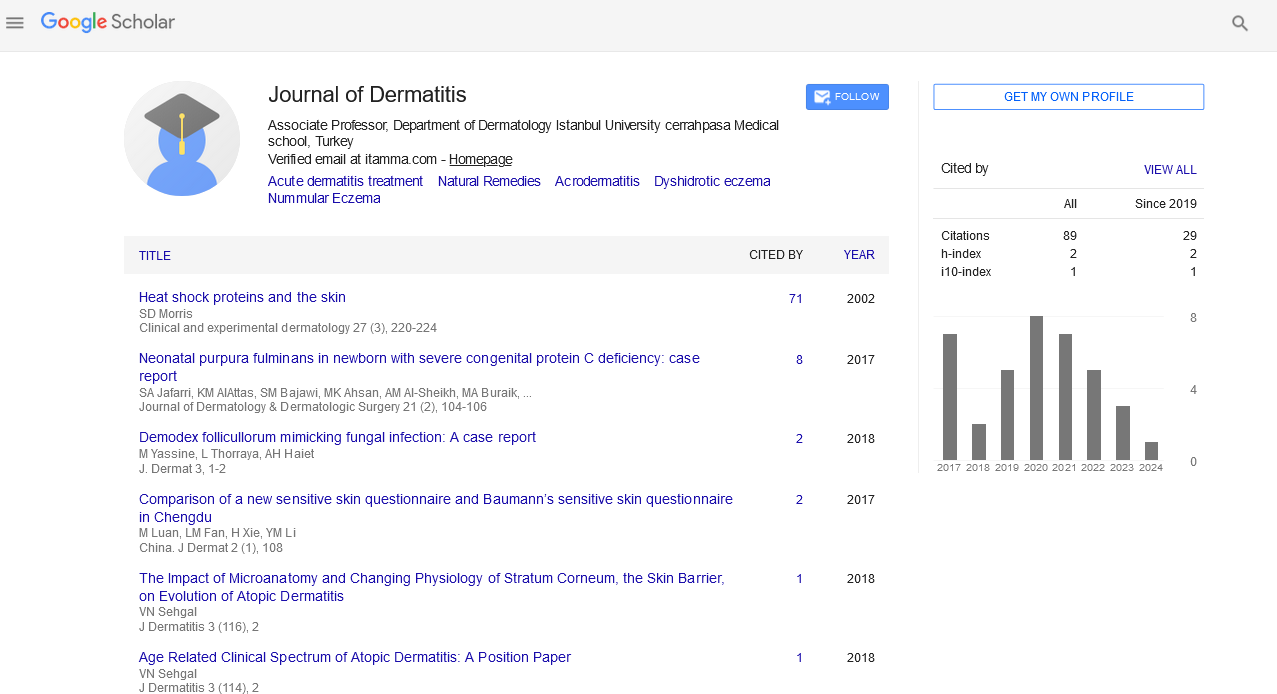Indexed In
- RefSeek
- Hamdard University
- EBSCO A-Z
- Euro Pub
- Google Scholar
Useful Links
Share This Page
Journal Flyer

Open Access Journals
- Agri and Aquaculture
- Biochemistry
- Bioinformatics & Systems Biology
- Business & Management
- Chemistry
- Clinical Sciences
- Engineering
- Food & Nutrition
- General Science
- Genetics & Molecular Biology
- Immunology & Microbiology
- Medical Sciences
- Neuroscience & Psychology
- Nursing & Health Care
- Pharmaceutical Sciences
Opinion - (2022) Volume 7, Issue 2
Applications of Perioral Dermatitis
Simonsen John*Received: 01-Mar-2022, Manuscript No. JOD-22-16440; Editor assigned: 04-Mar-2022, Pre QC No. JOD-22-16440 (PQ); Reviewed: 17-Mar-2022, QC No. JOD-22-16440; Revised: 24-Mar-2022, Manuscript No. JOD-22-16440 (R); Published: 31-Mar-2022, DOI: 10.35248/2684.1436.22.7.151
Description
Perioral dermatitis is treated with a combination of oral and topical medicines. If perioral dermatitis is developed by the use of a tropical steroid, the key to treating it is to withdraw the steroid slowly and carefully. The increased usage of no steroidal anti-inflammatory drugs will aid in the treatment of this condition.
Perioral dermatitis is a rash around the mouth caused by a skin disorder. The rash can also appear around the eyes, nose, or genitals, however this is rare. Dermatitis is a skin inflammation, and perioral refers to the area around the mouth. Females between the ages of 20 and 45 are more likely to develop perioral dermatitis. The illness can also affect older adults, men, and children, but it is less common. Perioral dermatitis is a type of periorificial dermatitis that affects the skin around the eyes, nostrils, mouth, and, on rare occasions, the genitals.
Medical practitioners, on the other hand, use the term perioral dermatitis to describe the ailment that affects the skin around the mouth. Perioral dermatitis affects young adults and adult females up to the age of 45 in the majority of cases. When it affects children, however, it is referred to as childhood perioral dermatitis.
Lipoid perioral dermatitis is a more severe form of the condition that causes a person to develop thicker clusters of bumps that can be red or brown in color and affect both light and dark skin tones.
Granulomatous periorificial dermatitis is a disorder that is similar to granulomatous periorificial dermatitis. It is more common in children with darker skin tones, but it can also be found in children with lighter skin tones. It commonly appears as flesh-colored papules that are yellow-brown in appearance. Perioral dermatitis is a rash that appears around the mouth and is rough or scaly in appearance. These pimples usually appear a little distance away from the lips and do not damage the skin exactly adjacent to the mouth. It's also possible that they'll form a ring around your mouth.
The rash might sometimes occur around the nose or eyes. It can also form around the genitals, but this is uncommon. Some persons with perioral dermatitis develop only a few pimples, and their rash is barely visible. Others may have several bumps that produce a visible rash.
In those with fair complexion, the pimples may be flesh-colored or hyper pigmented, and they may seem red or pink. The bumps, while they resemble pimples, are not the same as acne. The rash may appear inflammatory, with red, pink, or flesh-toned skin underneath and around it. The rash can be irritating or not, but it normally does not hurt. Tightness or moderate burning in the afflicted skin, which may be dry or flaky, may be experienced by some patients with perioral dermatitis.
Perioral dermatitis is caused by no underlying ailment and is not communicable. Although the exact origin is unknown, researchers believe it has something to do with the usage of topical corticosteroids.
Topical corticosteroids are steroid ointments, lotions, or gels that are applied to the skin to treat a variety of ailments. However, topical corticosteroids should only be used as a short-term treatment, and the majority of them are not suited for use on the face. Corticosteroids are sometimes used for longer than they should be or on the face. Skin damage may occur as a result of this.
Citation: John S (2022) Applications of Perioral Dermatitis. J Dermatitis.7:151
Copyright: © 2022 John S. This is an open-access article distributed under the terms of the creative commons attribution license which permits unrestricted use, distribution and reproduction in any medium, provided the original author and source are credited.

